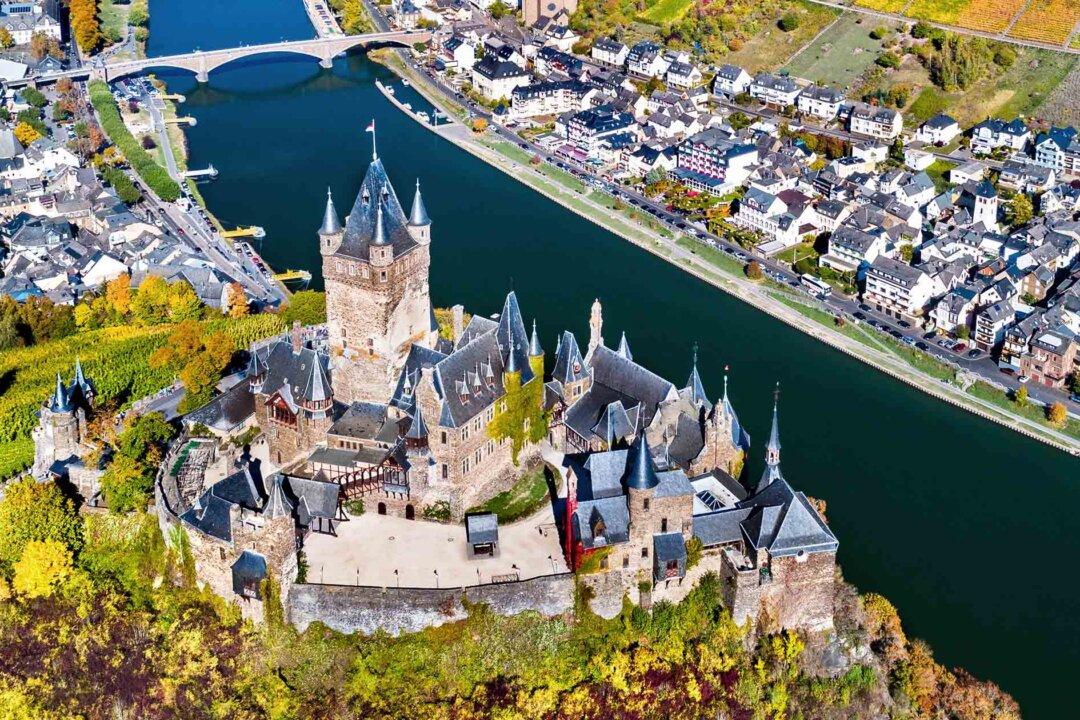This 11th-century German castle, among the eight oldest castles in the world, was once partially destroyed but lovingly restored centuries later. Still standing today with some original features, the statuesque castle looks as though it fell straight from the pages of a fairytale.
Reichsburg Cochem, otherwise known as Cochem Castle, stands on a hill some 330 feet above the river Moselle in Cochem, Germany. Believed to have been built around the year 1000 A.D. as a fortified home by the Palatinate Count Ezzo, the castle was first documented in 1051 when Richeza, Ezzo’s eldest daughter and the former Queen of Poland, gifted the castle to her nephew Henry I, according to the castle website.





